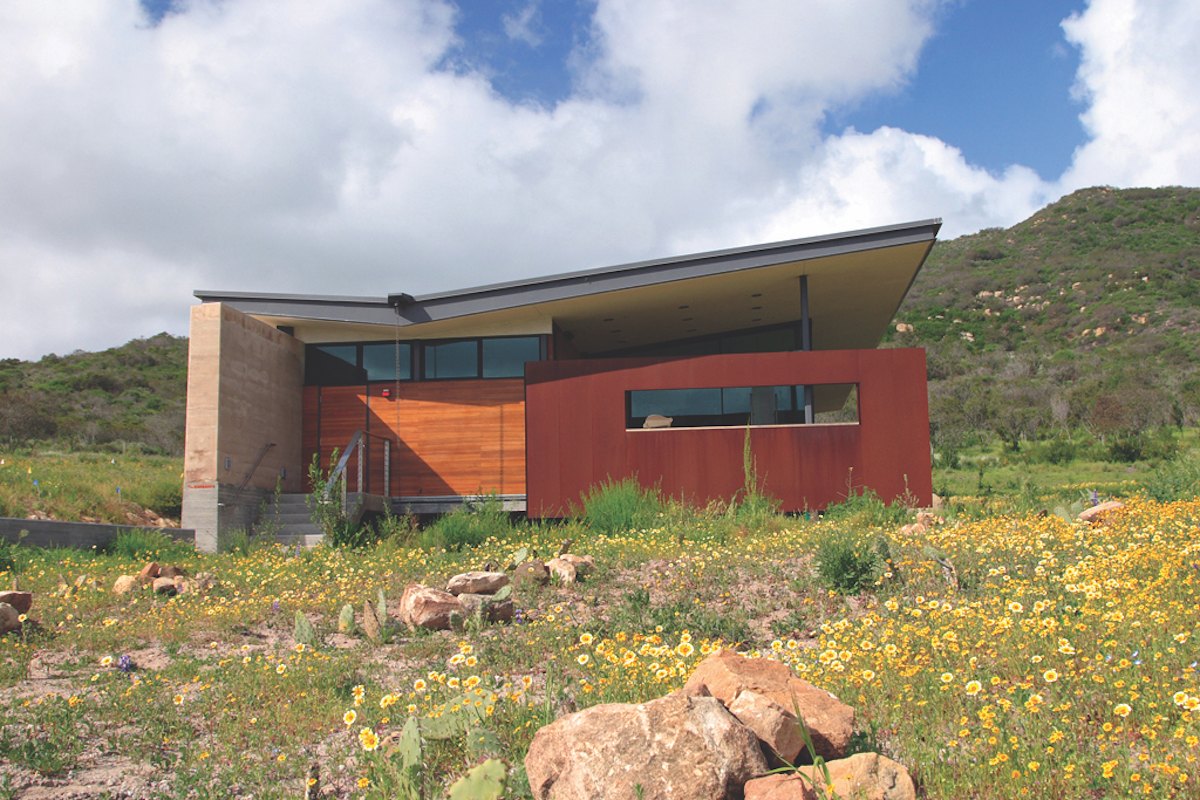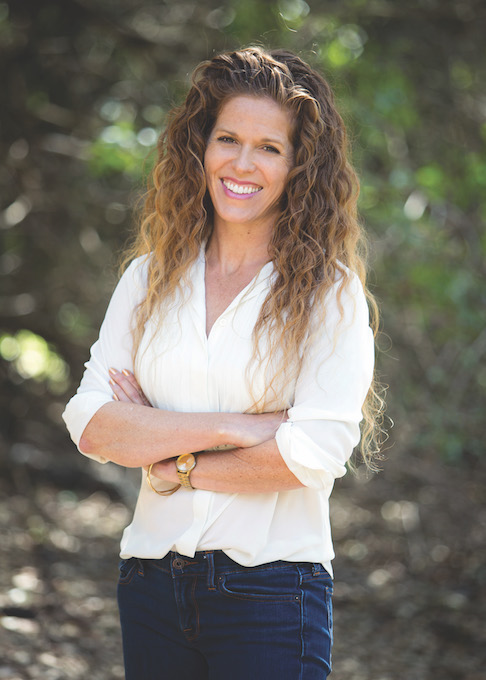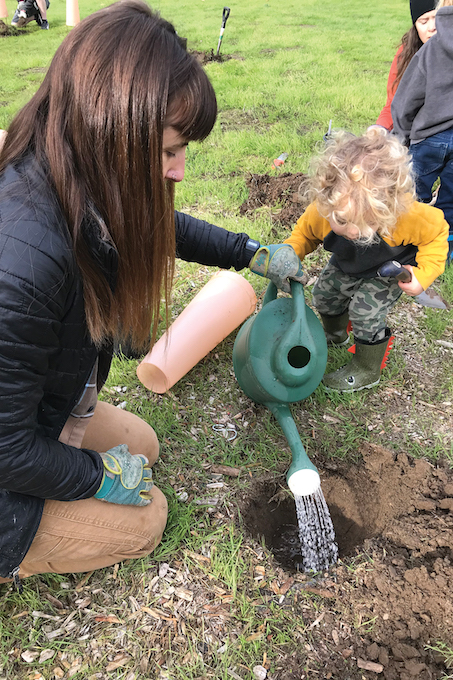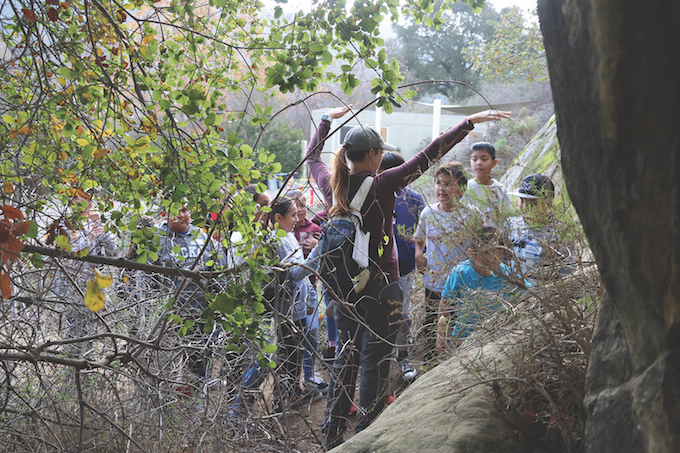
Laguna Canyon Foundation works to maintain a connection between the community and the natural environment here in town.
By Ashley Ryan
While there isn’t a ton of open space left in Orange County, the Laguna Canyon Foundation does all it can to ensure accessibility to and exploration of the great outdoors. Focused mainly on the South Coast Wilderness—which includes Laguna Coast and Aliso and Wood Canyons wilderness parks, Crystal Cove State Park and more—its programs and projects help make Laguna’s natural areas what they are today.
“It’s our mission to protect the 22,000 acres of open space surrounding Laguna Beach from development, invasive species, overuse and wildfire,” explains Hallie Jones, the foundation’s executive director. “We do that through habitat restoration, education programs, trail work and advocacy.”
The foundation got its start in the early 1990s, negotiating a land sale with the Irvine Co. after the historic march in Laguna Canyon that aimed to save local wilderness in 1989. “Laguna Canyon Foundation was formed to make sure that the process went smoothly and the land would be protected in perpetuity,” Jones explains.

Aliso and Wood Canyons Wilderness Park was created in 1990 with Laguna Coast Wilderness Park following three years later, thanks to help from the city of Laguna Beach and OC Parks, both of which offered support to ensure the land was made available for public use.
In the years since they were established, wildlife has flourished in the parks. “Laguna Canyon is a biodiversity hot spot,” Jones says, noting that the region is home to everything from coyotes, bobcats, foxes and mule deer to native weasels, red-tail hawks, horned lizards and rattlesnakes. “Unfortunately, our wildlife is threatened by the sheer number of people on the trails, which is why the parks close at dusk—to let wildlife roam,” she adds.
But the animals aren’t the only living things to call the canyon home, Jones says, noting that we’re surrounded by some of the last coastal sage scrub left on the planet. The endangered aromatic plant is essential to wildlife species in the area as well. “It’s our responsibility, as stewards of this amazing planet, to protect the plants and animals that came before us,” she notes. “… We’ve got to protect the open spaces we have left for the wildlife that depend on them, but also to preserve our own quality of life. As a parent, I want to leave my kids a world in which they get to explore and adventure. If we don’t actively work to protect our wildlands, they simply won’t survive for future generations to experience.”
Visitors can learn more about the flora and fauna of the region at the Nix Nature Center, which is the perfect starting point for anyone interested in Laguna’s open spaces. Located in the northern part of Laguna Coast Wilderness Park, this venue is the perfect spot to grab a trail map and educate yourself on the evolution of the local land, the past inhabitants of the region and more.
When it comes time to step out, Jones recommends the West Ridge Trail in Aliso and Wood Canyons Wilderness Park to get a workout in and for its spectacular views, which reach all the way to the ocean. “I also like to visit the Nix Nature Center and sit on the painters deck just watching the birds and other wildlife,” she notes. “If I’ve got more time, I’ll visit Emerald Canyon or Laurel Canyon [both in Laguna Coast Wilderness Park]—two hidden gems.”
Open Space
Whether you want to trek along local trails and help restore natural habitats or step up as a volunteer with the Laguna Canyon Foundation, chances to explore and offer assistance are wide open.

Healthy Habitats
One important part of the foundation’s work that dates back to its beginning is protection and preservation of these natural lands. As part of the California Floristic Province, Laguna Beach and its surrounding areas are deemed a hot spot for biodiversity, with more than 1,500 endemic species. Yet the region has lost over 70% of its native plantlife, meaning that habitat restoration work is more important than ever. Many of the foundation’s restoration sessions are open to the public, allowing locals to pull weeds, plant native species and maintain the parks’ 70 miles of trails through brushing, tread improvements, drain maintenance and more. Advanced reservations are required however. “We limit the number of people at the volunteer events to make sure everyone stays safe and we don’t do more damage to the trails,” says Hallie Jones, the executive director of Laguna Canyon Foundation.

Get Involved
There are a number of ways to help support the foundation’s mission, but one thing that is helpful is becoming a long-term, certified volunteer. Jones suggests attending a few of the foundation’s programs first to be sure it’s something you’d be comfortable leading. Volunteers sign up through OC Parks to become certified, undergoing a six-hour orientation as well as CPR and first aid training sessions. “After you get some local training on the trails and go through a background check, you can lead hikes and volunteer events, help out on trail days, staff the Nix Nature Center or become a backcountry patrol volunteer,” she adds. Those who are unable to devote time can also consider charitable contributions by donating through the foundation website; the organization is also part of Amazon Smile, which allows shoppers to select a charity to benefit from their purchases.

Evolving Education
Outreach and education have become a pivotal component of the foundation’s programming, as Jones says that the next generation is key to preservation. “If we don’t inspire the next generation of environmental advocates, no one is going to stand up to fight for this land when we’re gone,” she explains. During the school year, the foundation partners with 12 Title I schools, mainly from Santa Ana, to bring students in second through fifth grade to Laguna’s natural spaces. Lessons within the park include things such as art in nature, survival and camouflage, habitats, observation and field journaling. “These students don’t have the same access to our open spaces that local kids do. Yet they have the same legacy,” Jones notes. “We need to increase opportunities for kids from all backgrounds so that every child has the chance to see a deer grazing in a meadow or watch a hawk soar. That awe-inspiring majesty belongs to all of us.”




